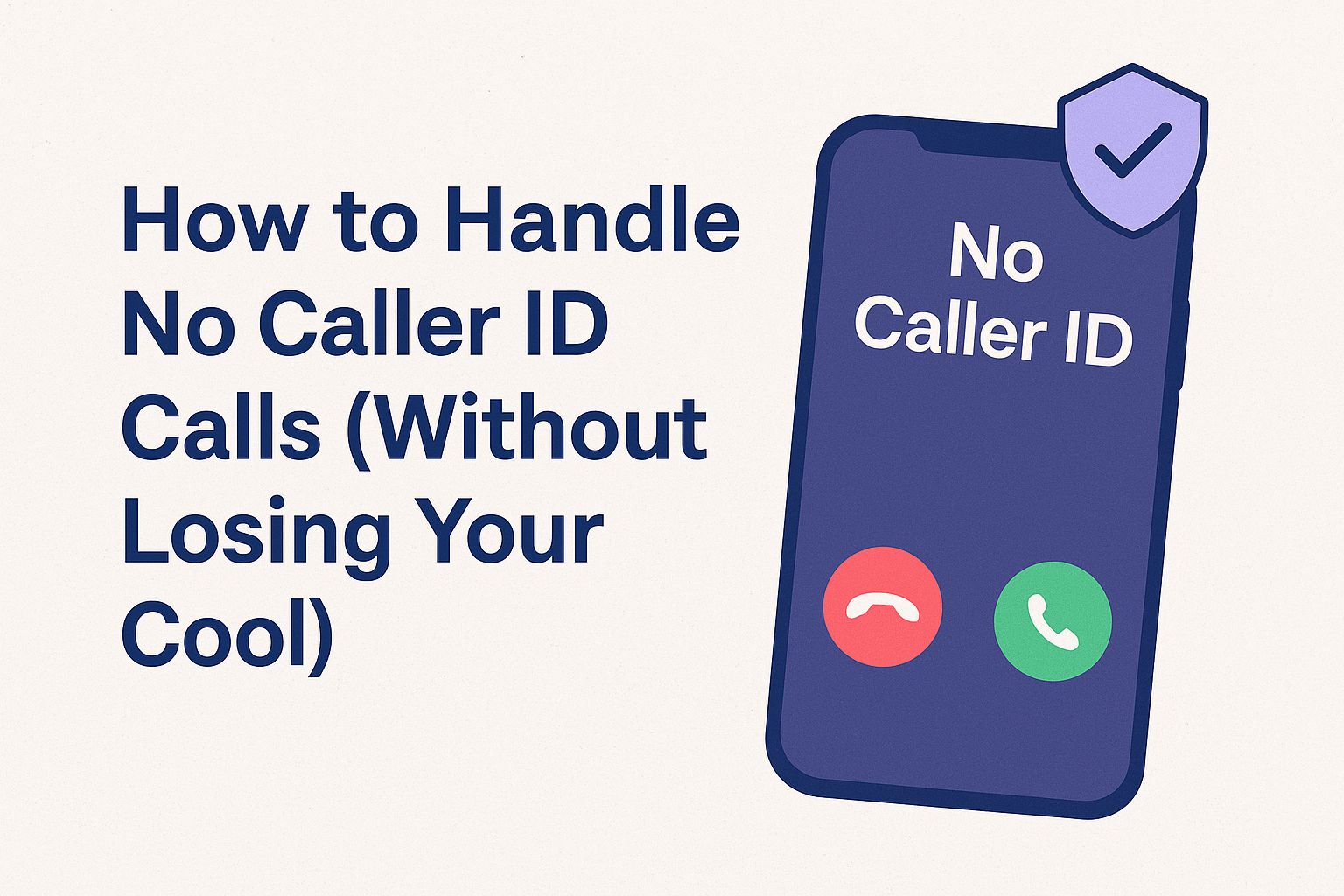
Published 08/20/25
No Caller ID calls are the modern-day equivalent of a knock without an introduction. Suspicious? Definitely. Stress-inducing? No doubt. But you're not powerless.
Whether you're getting spammed by hidden callers or want to unmask a blocked number, there are smarter, safer ways to take back control of your phone. Here’s how to stop guessing and start protecting your peace of mind.
What Is a No Caller ID Call?
A No Caller ID call is when the caller deliberately hides their phone number using settings or a masking feature. You might see "Unknown Caller," "Private Number," or simply “No Caller ID” flash across your screen.
Unlike regular spam calls, these hidden calls make it harder to identify, report, or block the source—unless you're equipped with the right tools.
Why Do People Use No Caller ID?
There are a few legit reasons for masking a number, like:
Law enforcement or government agencies
Health professionals calling from protected lines
Businesses returning a call from a private system
But more often than not, No Caller ID is used to bypass your guard—and sometimes, your blacklist.
That includes:
Telemarketers dodging spam filters
Scam calls fishing for information
Exes, harassers, or others you’ve intentionally blocked
How to Find Out Who Called You From No Caller ID
Here’s where the fun begins. You’ve got a few solid options to unmask that mystery number.
1. Use a Call Tracking App
Apps like iCaughtYou help you record and recall calls, unmask hidden numbers, and even blacklist harassers in a few taps. It’s not just about catching the call—it’s about reclaiming control.
Get smarter about who’s calling. Try iCaughtYou today.
2. Contact Your Carrier
Some carriers offer Anonymous Call Rejection or Call Trace services, which can help block or identify anonymous calls. Check with your provider about what tools they offer—just keep in mind they might come with added fees or limited use.
3. Use 57 or 69 Shortcodes
Depending on your location, dialing 57 (Call Trace) or 69 (Last Call Return) can help capture information about the last incoming call. Just know: results aren’t guaranteed, and this usually works only on landlines or specific mobile networks.
4. Block All Unknown Callers
Most smartphones allow you to auto-silence or block calls from numbers not in your contacts. On iOS, go to:
Settings > Phone > Silence Unknown Callers
For Android, the settings vary by brand, but a quick search in your Phone or Call Settings should point you there.
Pro tip: This is best used when paired with a call tracking app—otherwise, you might miss legitimate first-time calls.
How to Block No Caller ID Calls
The nuclear option: block all hidden calls entirely.
You can either:
Use built-in phone settings (as above)
Set up “Do Not Disturb” to only allow calls from contacts
Or get a smarter solution that filters, flags, and stops repeat offenders—automatically
With iCaughtYou, you can do more than just block. You can:
Identify repeat offenders
Auto-record suspicious calls
See call patterns over time
It's privacy—powered by information.
Final Thoughts: You Deserve to Know Who’s Calling
It’s your phone. Your time. Your peace of mind.
No one should have unchecked access to your attention. If you’re constantly asking, “Who keeps calling me from a blocked number?”—you’re not alone, and you’re not stuck.
Start using tools that work for you, not around you. iCaughtYou helps you unmask hidden callers, recall past calls, and block unwanted ones with confidence.